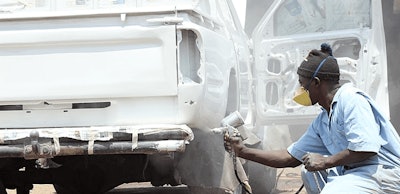
Toronto, Ontario – Painting is often one of the most overlooked aspects of the collision repair process, but a lot can go wrong in the booth and nothing acts more like a rolling advertisement for a shop than their paintwork.
A key point to remember is that, like with most things, the first step in the painting process can make or break an entire repair job. It is crucial that the painter make sure the original paint is accurately matched right from the beginning and that the surface to be painted is clean and free of debris that could cause paint contamination.
As well, many painters run into the issue of dieback and solvent pop when completing their paintwork. This can be avoided by reducing the amount of time between coats to prevent the first coat from skinning over and creating bubbles under the subsequent coats.
Inadequate temperature and airflow control can also contribute to issues when the paint is being applied.
Runs and sags in a vehicle’s clear coat are often the results of low pressure coming from the spray equipment, the spray gun is being held too close to the vehicle’s surface or too much paint is being used altogether.
Shops looking to maximize the number of vehicles they cycle through the spray booth is an ever-present concern in the collision repair industry, however, there are options available to help accelerate the process.
Many shops now have spray booths with convection bake capabilities that allow them to cure vehicle paint faster.























